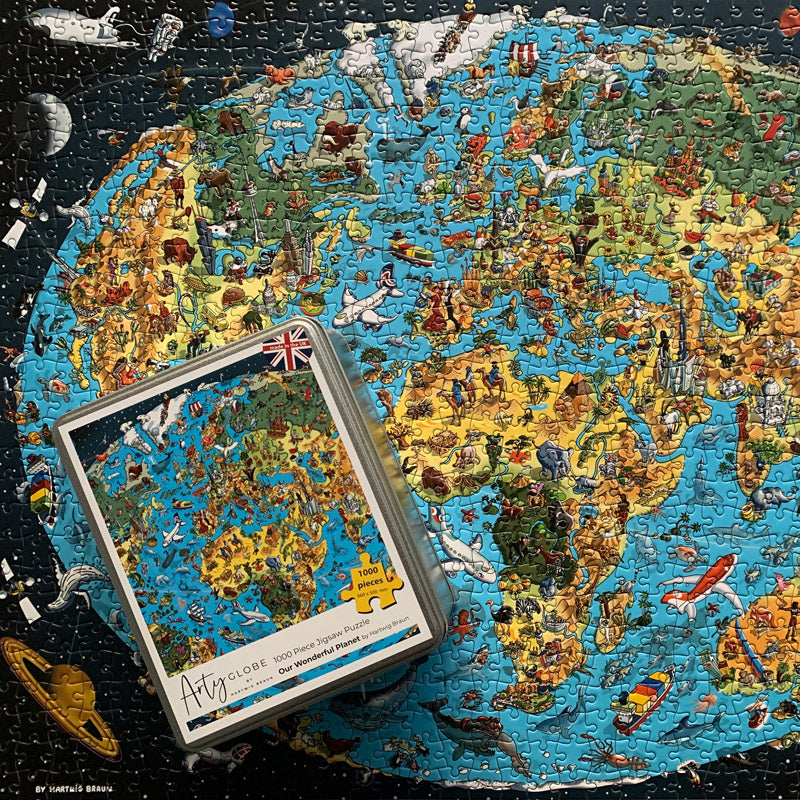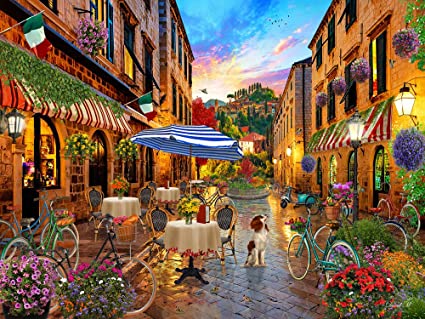
240 piece jigsaw puzzle
This 240 piece puzzle represents Yosemite National Park. It is one of most beautiful national parks around the world. This puzzle is suitable to all ages and made from high-quality maple wood veneer maple. This puzzle can be completed in one sitting.
XplorerMaps jigsaw Puzzle
Xplorer Maps jIgsaw puzzle in Yosemite is made in the USA and is proudly manufactured in the USA. This 1000 piece puzzle has a detailed map of Yosemite, California and is made from thick puzzle board for a tight fit. It was made by Masterpieces Puzzles Co. an American puzzle and gaming company.
The illustrations in the Xplorer Maps puzzles are hand-drawn by Chris Robitaille, co-owner of the company. He draws every line, letter, and icon by hand.
Pomegranate’s interlocking Jigsaw Puzzle
Yosemite Puzzle is designed for children. It features animals from the park's wilderness. This puzzle includes 100 pieces and measures 19 inches by 14 inches. This puzzle is part a Right Fit(r), series. It is recommended that you age six or higher.

FAQ
What kind of hobbies is best for introverts.
Introverts can concentrate on one thing at the same time. They tend to prefer solitary activities such as reading, writing, playing music, watching movies, etc.
They enjoy being alone and spending time alone. They are not social creatures and don't want to be around people all day. They are often bored when surrounded in people.
This is why introverts often choose hobbies that require them to be alone. They might enjoy reading, listening to music or taking photos, painting, writing poetry, and other such activities.
Some introverts prefer to live alone. This allows them to focus on their hobby without being distracted by other things.
What hobbies are popular right now?
Popularity does not always mean that you are popular. Popularity can often be used to excuse mediocrity. Most people don't have the time or energy to pursue their hobbies. They're too busy working to make ends met. So what should you do if you don't have much free time? You could also start your own business.
But it's not an easy task. It takes a lot of work to make your dream a reality.
You should look into a hobby if you want something more thrilling than running your own business.
Hobbies are not limited to creative pursuits. There are many types of hobbies. There are many hobbies available, including:
-
Gardening
-
Cooking
-
Photography
-
Reading
What are your top hobbies?
Your favorite hobbies are ones you enjoy. If you love what you do then you'll find it much easier to keep going. You'll also have an excuse when you're not feeling well or tired!
Our hobbies include painting, crafts, photography and cooking.
You could also consider volunteering at a local charity shop, animal shelter, children's hospital, hospice, elderly care home, school, community center, church, etc.
Suppose you're looking for something more adventurous. Consider scuba diving and skydiving.
There are many unique ways to spend time in the outdoors, whether you're looking for adventure or a more traditional way to do it. These include caving, cliff diving, cave tubing, abseiling, sea kayaking, rafting, canoeing, climbing, trekking, bushwalking, mountaineering, backpacking, trail running, orienteering, off-road driving, quad biking, motorcycling, motorcycle riding, dirt bike riding, jet boating, hang gliding, hang gliding, parachuting, hang gliding, heli-skiing, ice skating, snowmobiling, snowshoeing, snowshoeing, cross country skiing, downhill skiing, telemark skiing, ski touring, sled dog racing, snowboarding, snowkiting, snowmobiling, spelunking, snowshoe hiking, snowshoeing and many more.
Statistics
- A new survey by Pew Research Center of teens ages 13 to 17 finds that 36% of girls feel tense or nervous about their day every day; 23% of boys say the same. (pewresearch.org)
- Much of this decline reflects the fact that teens are less likely to work today than in the past; among employed teens, the amount of time spent working is not much different now than it was around 2005. (pewresearch.org)
- Almost 80% of people claim to have no hobby. (hobbylark.com)
- 37% Video Games 36% Travel 36% Health and Fitness (quizexpo.com)
- The intensity of the dialogue partners' bond at the end of the forty-five-minute vulnerability interaction was rated as closer than the closest relationship in the lives of 30 percent of similar students. (time.com)
External Links
How To
How to start gardening
Gardening has been around since the dawn of agriculture. It requires patience, persistence, and determination. It is important to choose the right location for your garden. It could be large land, or just your backyard. Next, choose what kind of plants you would like to grow. Do you prefer flowers over vegetables? Some people are passionate about growing herbs, while others like raising livestock like rabbits. Before you decide which crops you will plant, consider the amount of space you have. If your climate is cold, you may decide to plant berries and fruits.
After you have decided what you want to plant, it is important that you prepare the soil. Your plants' success or failure will depend on the soil they are placed in. The soil should be rich in organic matter to provide nutrients for your plants' roots. Organic matter includes organic matter such as leaves, twigs or grass clippings. You need nutrients to your soil after you have prepared it. Depending on the type of plants you plan to grow, you may need different amounts of nitrogen, phosphorus, potassium, calcium, magnesium, boron, zinc, copper, manganese, iron, molybdenum, chlorine, sulfur, sodium, and so on. Online fertilizer calculators can be used to determine these values. There are many fertilizers to choose from, so it is important that you are familiar with the product you are using.
After you have prepared your soil, and added the correct nutrients, you will need to wait until your seed germinates. The process typically takes 2 to 3 weeks depending on the weather conditions and temperature in your area. Once your seeds have sprouted, you need to water them regularly. Watering your plants too little or too often can cause problems. You should ensure that your plants get enough water at regular intervals. Avoid overwatering. Overwatering can lead to root rot and fungal diseases. When watering your plants, remember that most plants require less water during the warm summer months than in winter. Keep in mind that certain plants may need to be dried after being watered. For example, tomatoes need to stay slightly moist but not wet. They don't like to sit in soggy soil. After the plants have finished flowering they must go dormant. Plants go dormant when they stop producing new growth and instead store energy for next year's harvest. Dormancy occurs when the plant stops sending signals that tell its roots to produce food. Throughout this period, the plant stores energy. Plants will soon die if they are exposed to too much or too cold temperatures.
Urban environments may limit the variety of plants you can grow. Concrete sidewalks, roads, buildings and parking lots are all common in urban areas. These blocks block sunlight from reaching ground level. Concrete absorbs light and prevents soil below from getting sufficient sun exposure. Many plants can't survive in urban environments due to lack of sunlight. There are many plants that can survive in urban environments. Many perennials, trees, and shrubs are able to adapt to urban living. Many annuals are also possible to grow indoors in containers. Container gardens can be used to grow greenery indoors year-round, no matter what the weather outside.
You are now ready to plant your garden!